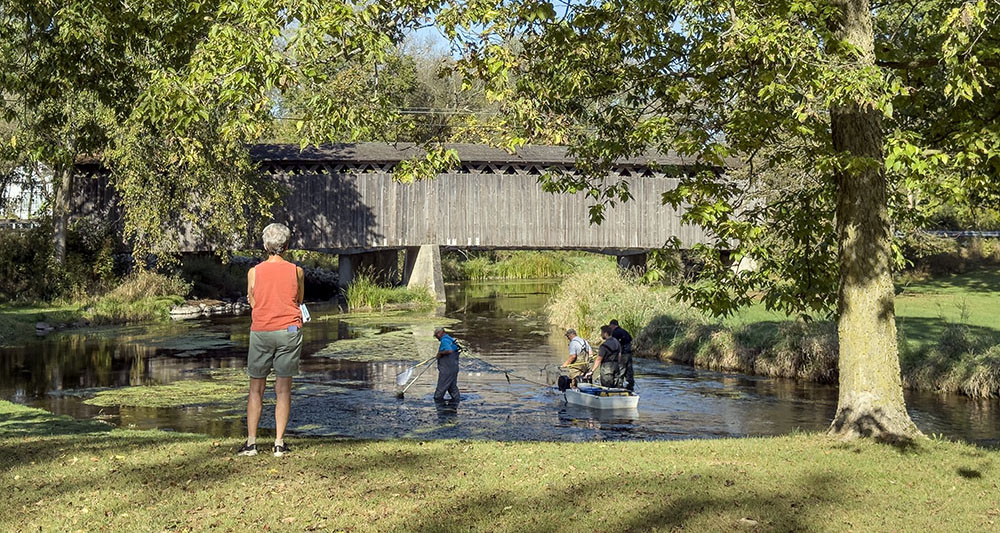
Treasures of OZ Eco-Tour 2024
September 30, 2024 | Topics: Events
By Eddee Daniel—with a little help from Ryan Miller
“What’s in a name? That which we call a rose by any other name would smell as sweet.” So says Juliet, lamenting the fact that being a Montague identifies Romeo as a sworn enemy. Names matter. Take the name “Park” for example. It can mean many different kinds of places, some of them contradictory (e.g., a nature preserve vs an industrial park). What then does it say about how much we value a place if we rebrand a park as a “treasure?” We are talking, of course, about the “Treasures of OZ” and Ozaukee County’s annual Eco-Tour, which celebrates the beauty and accessibility of its parks and nature preserves.
This year’s Eco-Tour, which was held on Saturday, Sept. 21st, highlighted five exemplary places. Normally, I would have tried to make it to all five in an effort to capture the action as well as the beauty with my camera. Unfortunately, this year another obligation prevented that and I was able to get to only two of the five. Fortunately, however, I have been to the other three many times. And so, while most of this post will be about the two I visited during the tour, I will share a sample photo taken previously from the other three, along with links to their pages on this website so that you can learn more about them and see additional photos if you wish.
Highland Woods
This 85-acre City of Mequon park began as one of the early Ozaukee Washington Land Trust (OWLT) preserves, which continues to hold a conservation easement on the property. Most of the park is a hardwood forest, although the northeast corner—bordered by Highland Road and Green Bay Road—is a large open field. Trails thread through the entire park in a series of loops.
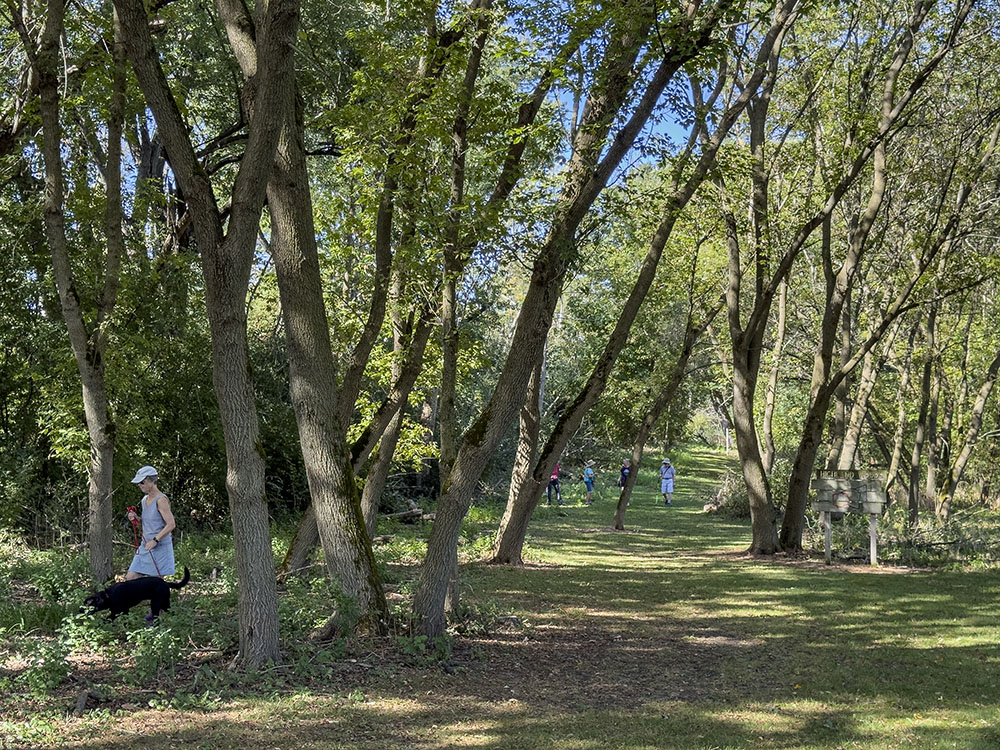
A corner of the park contains battered wood and wire remnants of cages used when there was a fox farm located there. Some of them are clearly visible from the trail and were pointed out by Richard, a volunteer guide. Back at the entrance, history buffs Jim and Katie had a picnic table full of information and photos about German prisoners of war held in Ozaukee County during WWII.
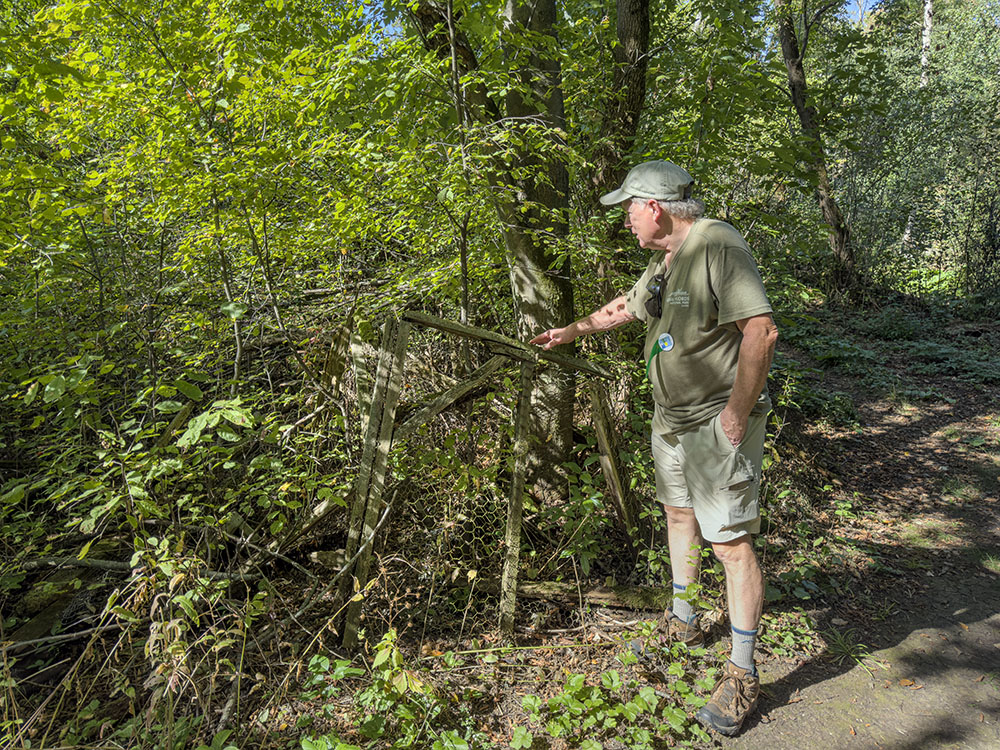

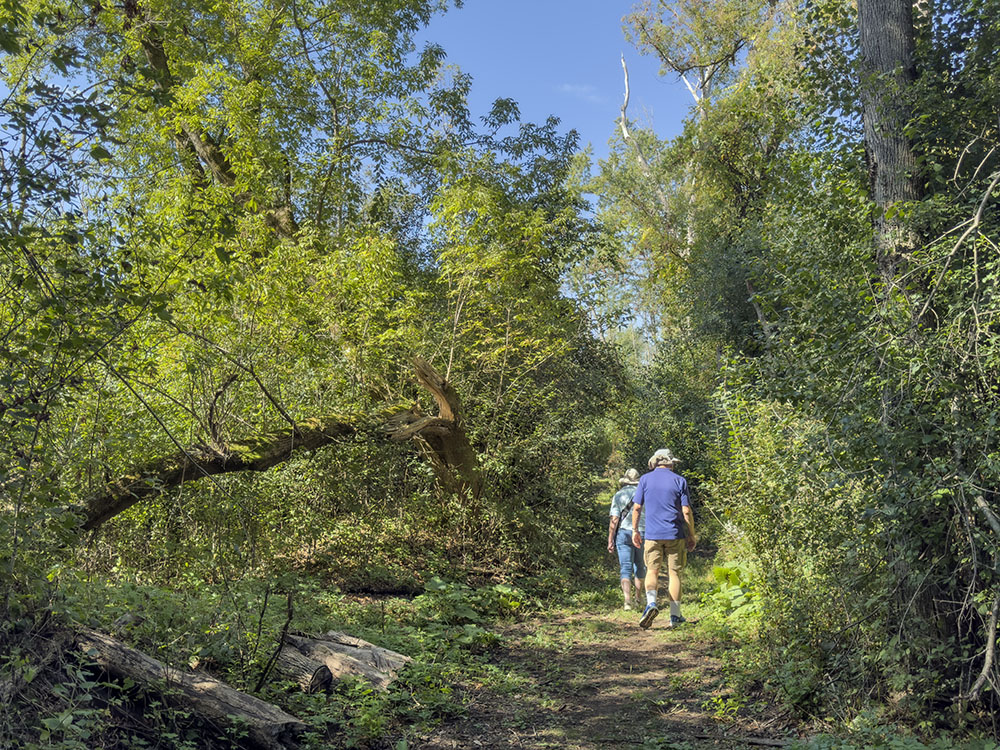
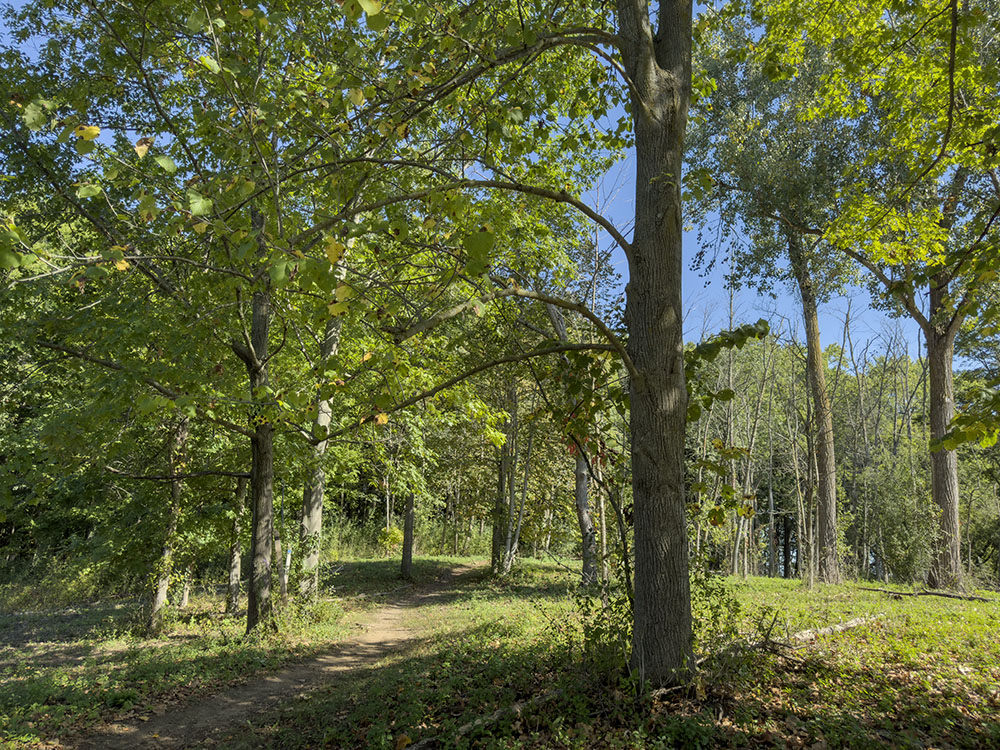
Covered Bridge Park
This park’s claim to fame is, of course, the historic bridge for which it is named. Built in 1876, it is the last remaining covered bridge of over 40 that once spanned waterways in Wisconsin. The bridge crosses Cedar Creek, which was the focus of activity for the Treasures of OZ event. I happened to arrive just as the action was getting underway. A team of four pushed a small, odd-looking watercraft out from the bank downstream and around a bend from the bridge. Three of the team were outfitted with both nets and long poles attached with waterproof wires to a generator in the boat. The fourth steered the boat and monitored the equipment.

They worked their way upstream, electrofishing as they went. Two of the team work for Ozaukee County Parks and I asked if they would explain the process and purpose in a follow up email. Here is what Ryan Miller, Aquatic Conservation Biologist, sent me (edited for length):
“The barge electrofishing equipment that we used on Saturday uses a generator to provide the power and three probes to deliver the current. Three people operate the probes while I (Ryan) control the voltage and pulse frequency to minimize harm to the fish while maximizing catching efficiency.
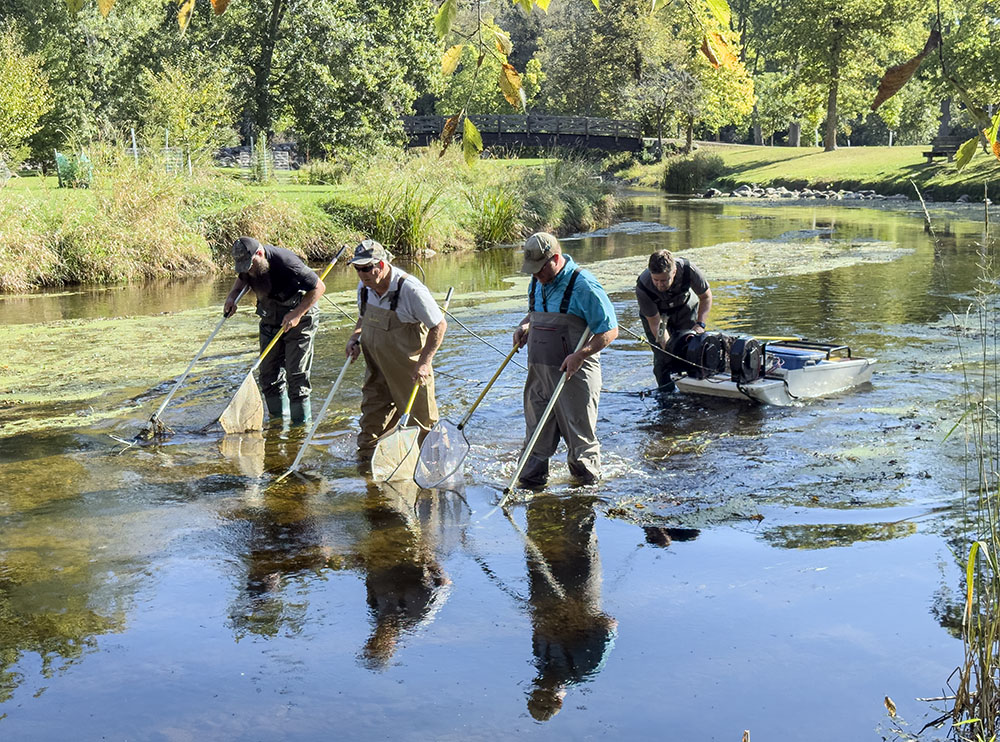
“Electrofishing surveys are a vital tool in aquatic biology and river ecology as they provide a snapshot method for assessing fish populations and their habitats. By temporarily stunning fish, we can collect data on species diversity, abundance, and size distribution, which are critical for understanding ecosystem health and dynamics. These surveys help identify changes in fish communities due to factors such as pollution, habitat alteration, and invasive species, allowing for informed conservation and management strategies. Normally we use these surveys both before and after a habitat restoration project to assess changes to the ecosystem.

“The electrofishing survey at Covered Bridge Park was slightly different, as the main objective was education. Many visitors to the park are unaware of the complex aquatic ecosystem in the creek. We were able to catch over 100 fish and 15 different species within a couple hundred meters of Cedar Creek.
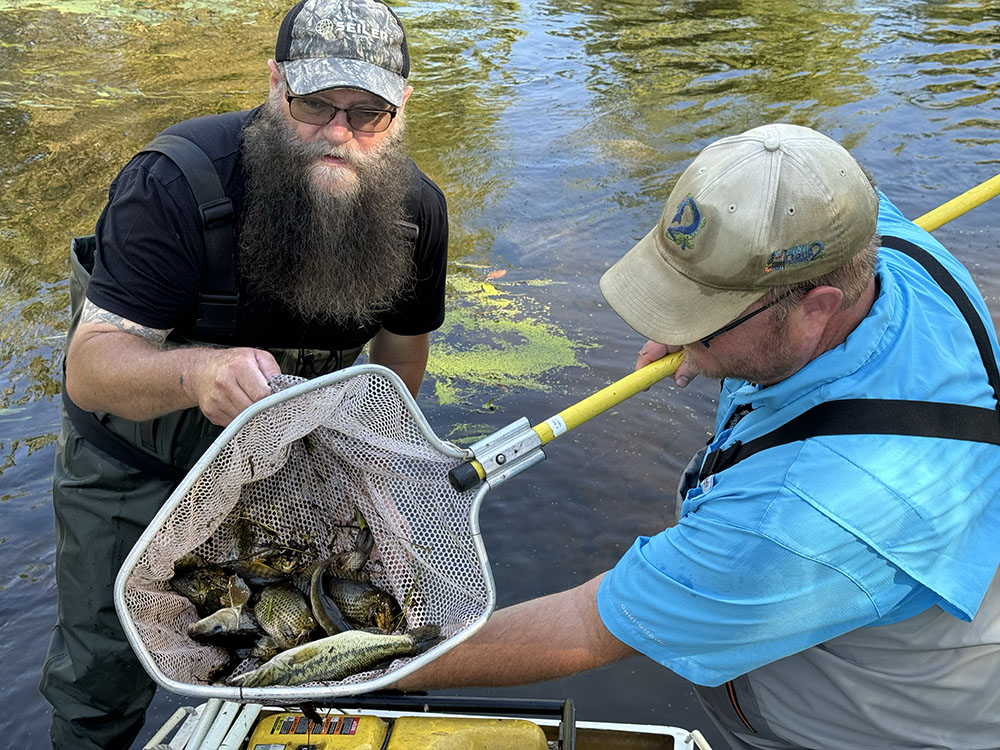
“Given the low water levels, those numbers are both higher than I expected. The number of species is the more important number. A variety of between 15-20 species is good for Cedar Creek. I like to look at the different types of species and their place in the ecosystem. For example, the White Sucker is a bottom feeder omnivore and the Largemouth Bass is a top carnivore. Other species we encountered fill other roles, such as the Common Shiner being an insectivore.
“Nothing that we caught was too surprising to me. Just the number of total fish and species diversity was slightly higher than I expected.” *
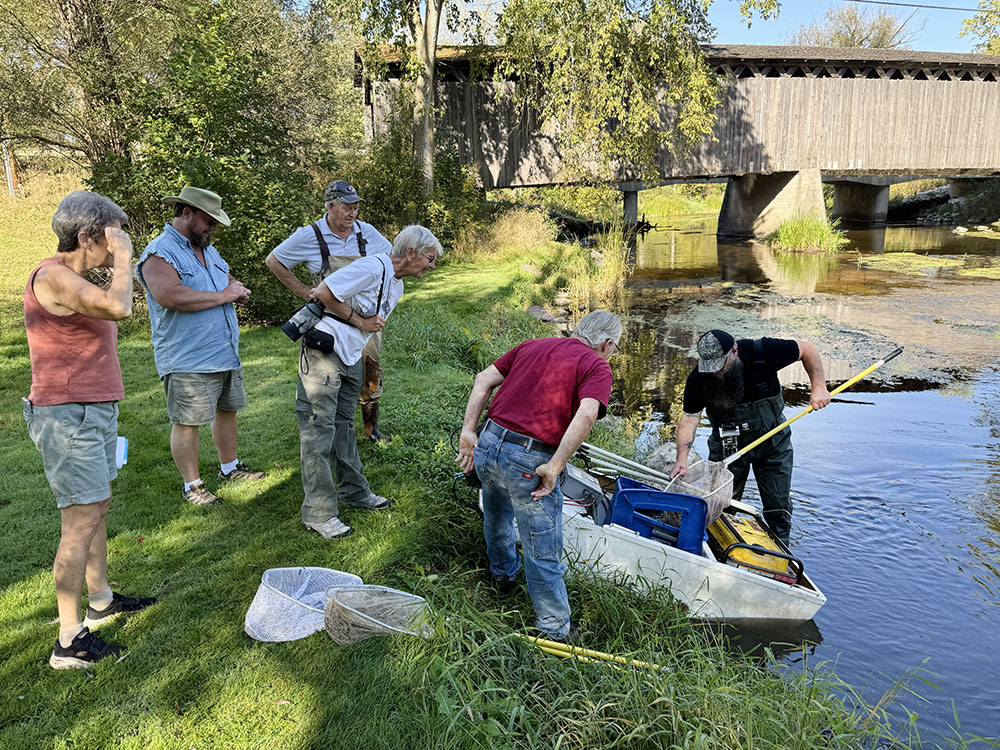
Just before they reached the covered bridge the team pulled over to the bank again. A fish tank was retrieved from the picnic pavilion and a selection of fish transferred from the tank in the boat to the one on the bank. Treasures of OZ visitors gathered around to see the catch and learn about the fish.
The fifteen species included such curiously named fish as Pumpkinseed, Hornyhead Chub, Stoneroller, and Blacknose Dace—along with more common ones like bass, bullhead, pike and minnow.

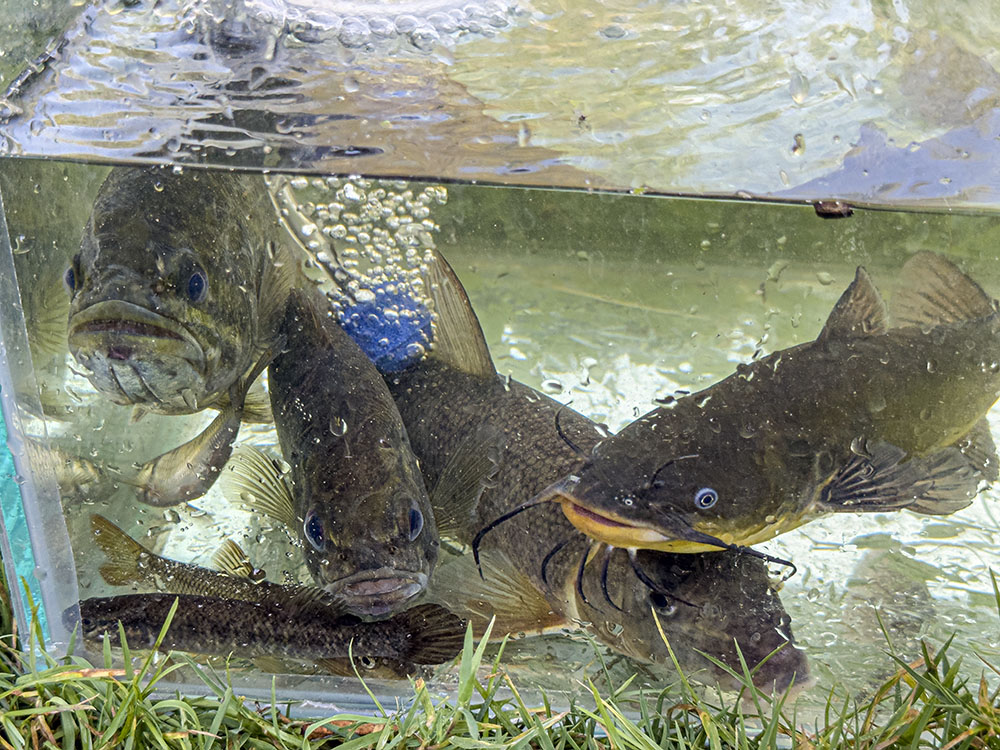
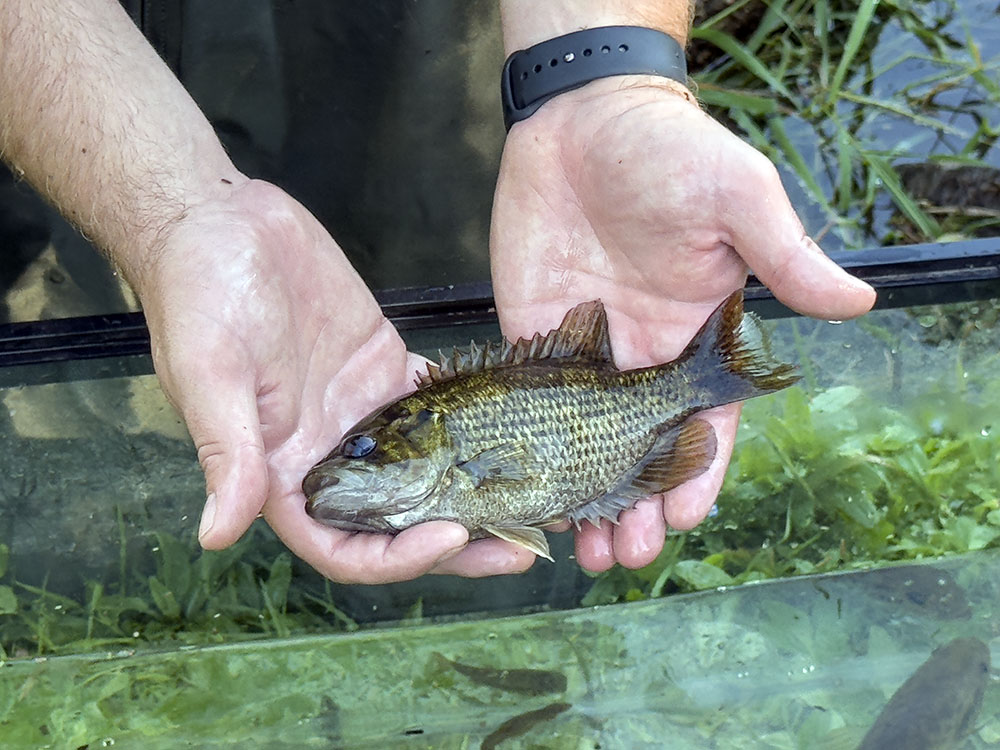

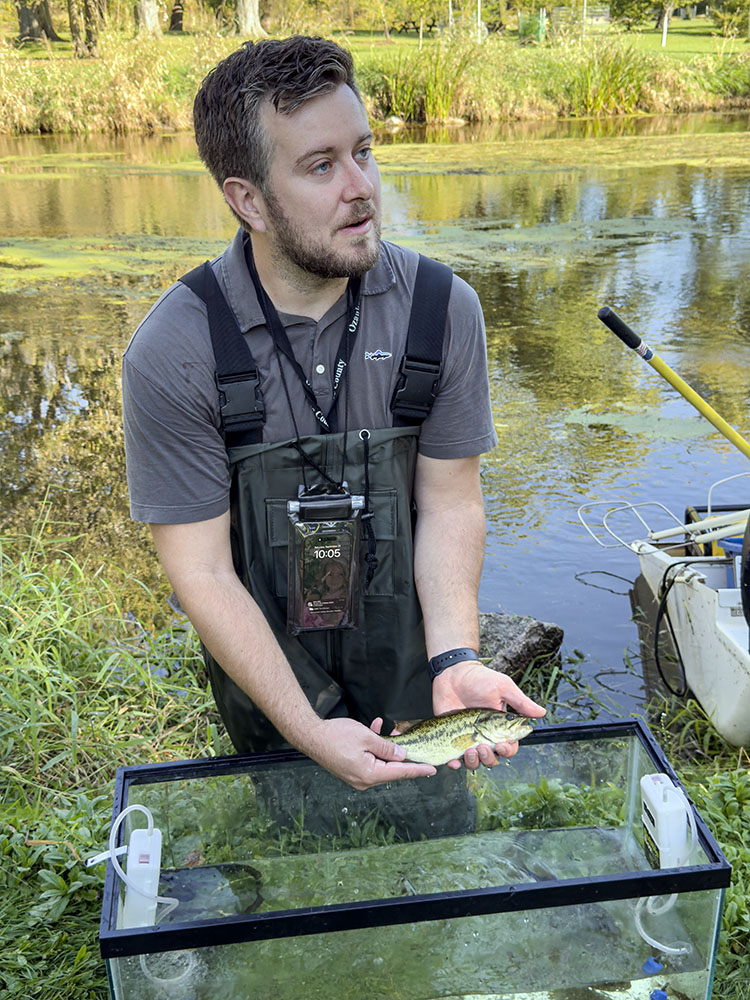
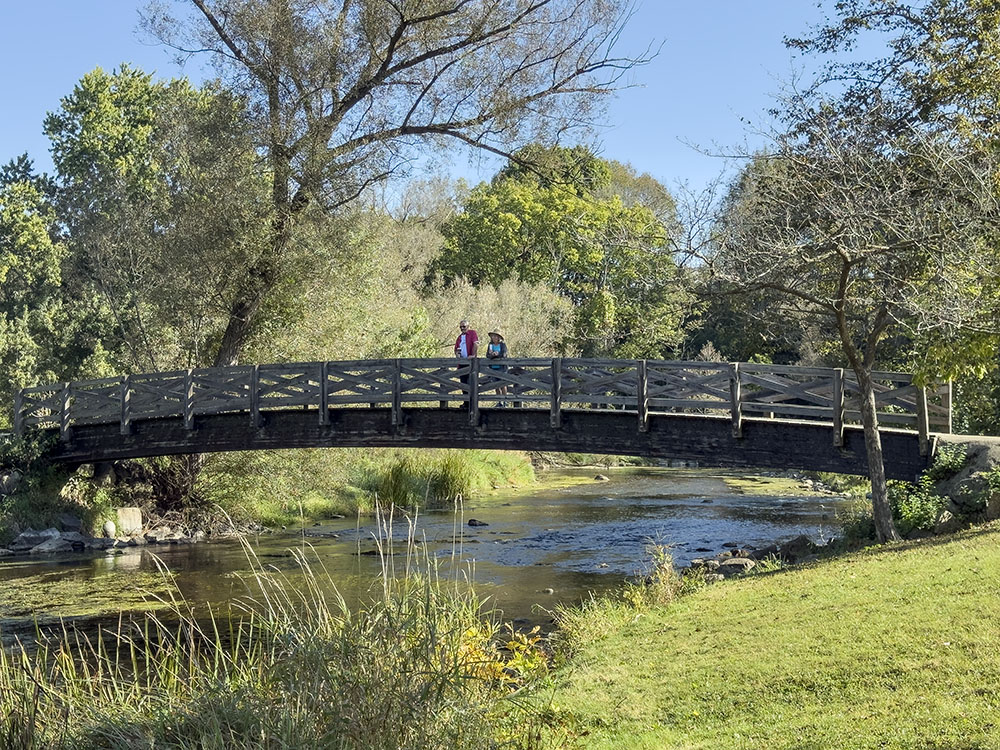
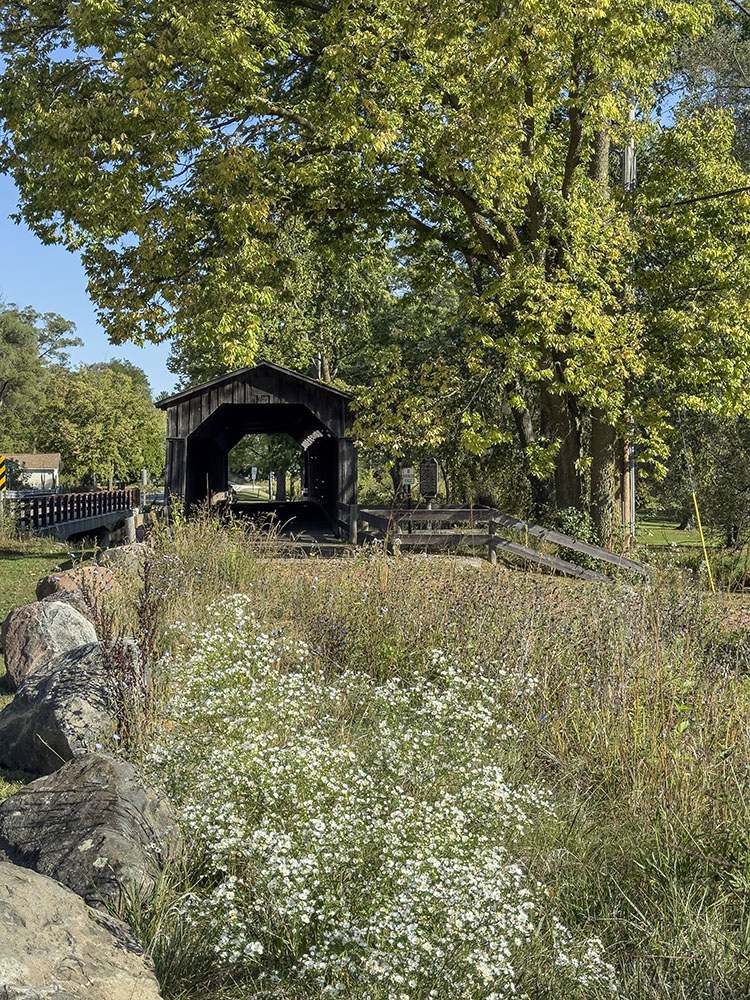
This served as the Treasures of OZ 2024 headquarters for the second year in a row. I did include it in last year’s Eco-Tour blog post, including dramatic drone photos of the then brand-new “floating” stairway on the bluff. Here’s one sample.

Naturalist Kate Redmond (who has contributed to this blog) led a prairie tour, but all 458 acres were open to the public for the event, including the Visitor’s Center, the “prettiest sugar shack ever,” historical sites, and miles of trails through many kinds of habitats and along the Milwaukee River.

This was the very first of the now over 30 Ozaukee Washington Land Trust preserves. OWLT Stewardship Director, Ryan Wallin was on hand to talk about the land trust, the trails and some of the history of this very special place. Sauk Creek runs over bedrock of the Niagara Escarpment and that section of the creek is quite dramatic especially in Spring when the water is high and flowing fast … and in fall when the sturgeon are migrating.

Treasures of Oz is a non-profit under Ozaukee Washington Land Trust. The annual Eco-Tour happens with the cooperation of the Ozaukee Treasures Network: Ozaukee County Planning & Parks, Riveredge Nature Center and many other organizations and individual volunteers. The event is also part of state-wide Land Trust Days, which is organized by Gathering Waters, Wisconsin’s Alliance for Land Trusts.
* Note: Thanks to Ryan Miller and Ozaukee County Plannng & Parks Department for providing information for this story.
Related stories:
Treasures of OZ 2018 focuses on the Milwaukee River
Ozaukee County celebrates 10th annual Treasures of Oz! (2019)
Fantastic fungi are among the Treasures of OZ! (2021)
Exploring the Treasures of OZ (2021)
Autumn Odyssey 2: Treasures of Oz and more! (2022)
Eddee Daniel is a board member of Preserve Our Parks. Ozaukee Washington Land Trust, Ozaukee Treasures Network, Gathering Waters, and Ozaukee County Planning & Parks are all project partners of A Wealth of Nature.
One thought on "Treasures of OZ Eco-Tour 2024"
Comments are closed.


Looks great and is a good read! Thank you so much!